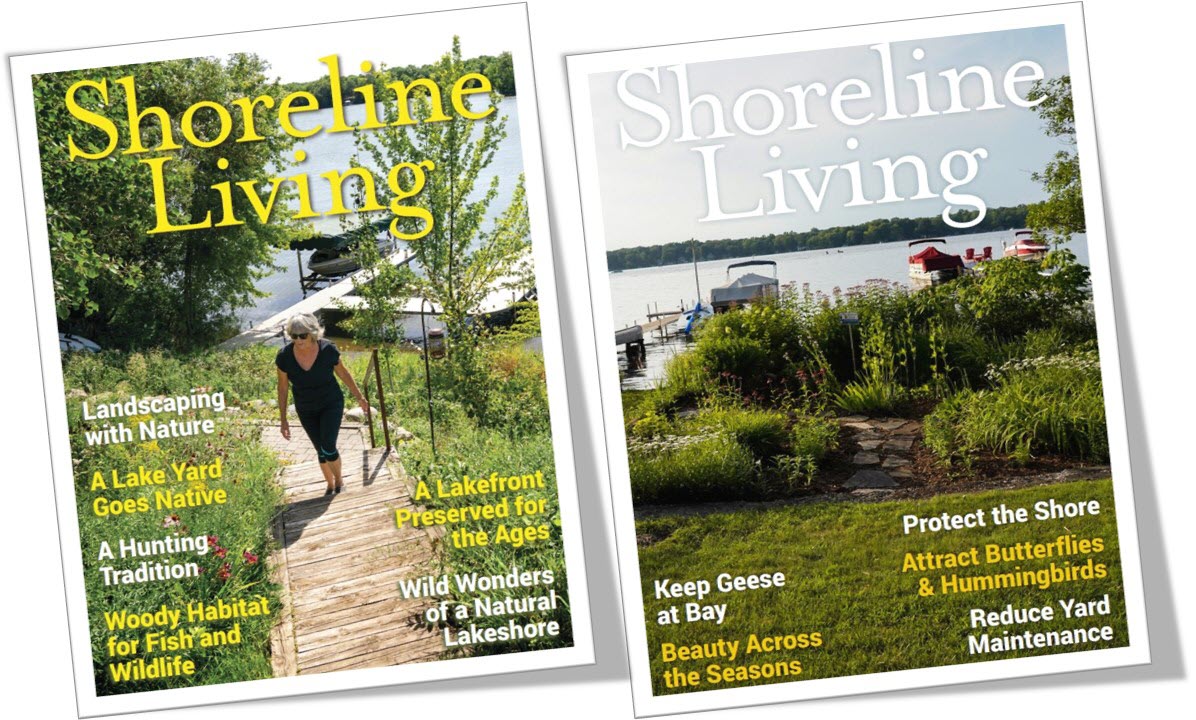Now available HERE for distribution in print or electronic format
Lakefront properties offer an opportunity to relax and enjoy recreation on the lake. Whether it’s taking a child fishing for the first time, learning to swim, enjoying a sunset over the water, or spending time with family and friends, lakefront properties are where memories are made. Lake shorelines are places we hold dear, and they also provide an important connection between clean water and healthy fish and wildlife. For this reason, lake shorelines are a critical area for conservation.
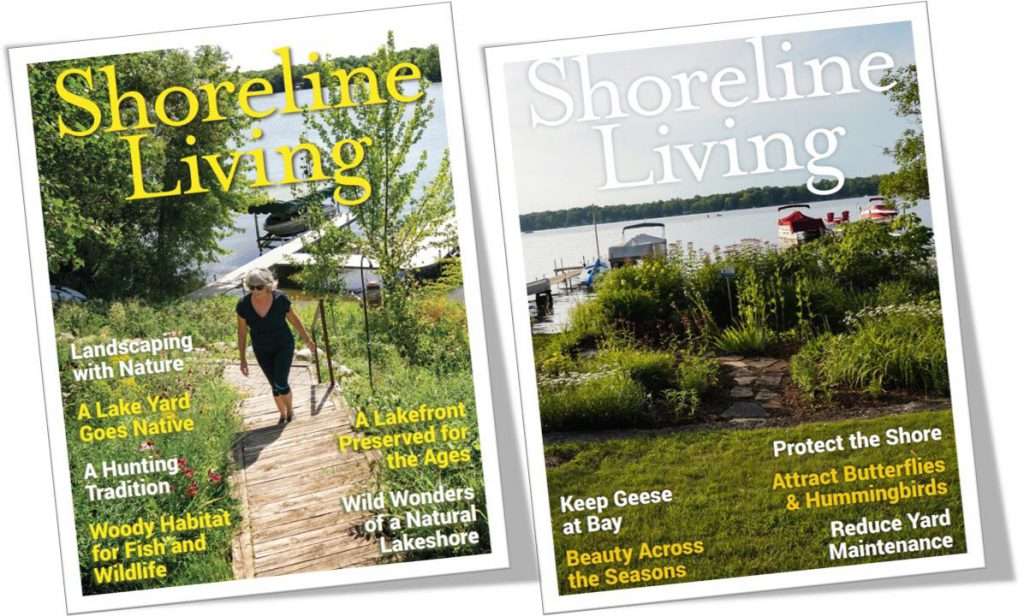
Resource agencies and conservation organizations have developed a host of practices for balancing property owners’ needs with what is best for the lake. These practices are imperative, because there are over 89,000 miles of inland lake shorelines across the Upper Midwest that support multi-billion-dollar fishing and recreational economies. Although there are many practices that a homeowner could implement to improve shoreline conditions, in many cases no action is taken.
Major barriers for creating and protecting natural shorelines include homeowners’ unfamiliarity with natural shoreline practices and a lack of relatable natural shoreline examples.
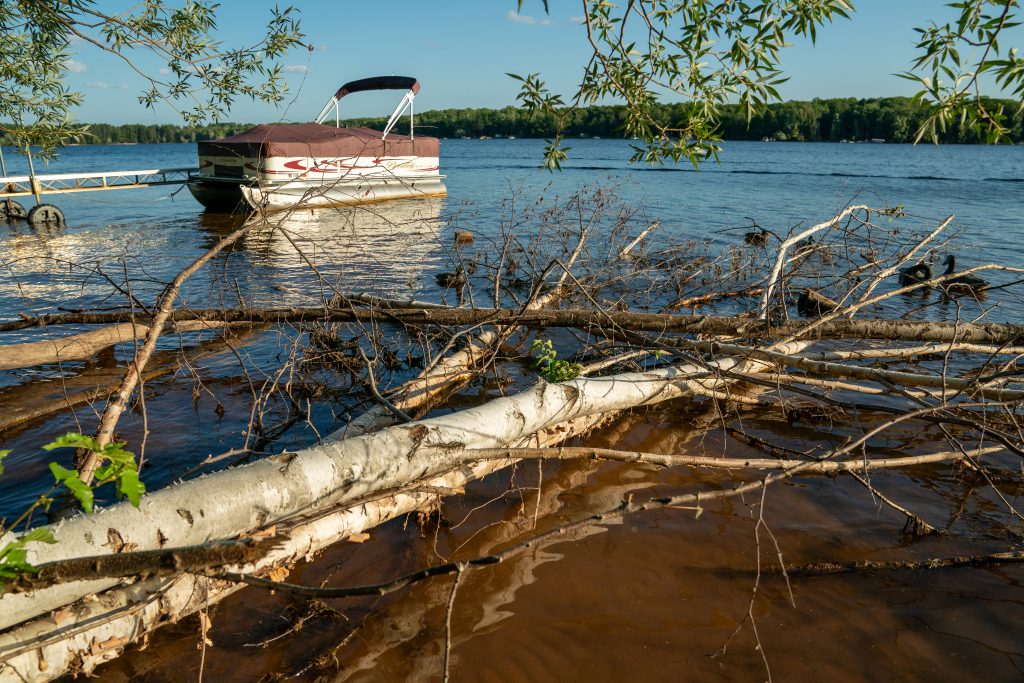
Following up on the success of Volume 1 of the Shoreline Living booklet, the MGLP is now promoting Volume 2. These publications tell the stories of lakefront property owners who have all taken different approaches with their shorelines. Five property owners featured in Shoreline Living Volume 1 used strategies ranging from relatively minor plantings and natural shoreline rehabilitation to more intensive natural landscaping and full protection. Volume 2 expands upon these themes with stories of five additional property owners from three states that highlight woody habitat restoration in the lake, wildflower plantings on the land, and conservation easements motivated by waterfowl protection and family traditions. The stories of these property owners are complemented by high-quality pictures that illustrate the beauty and functionality of natural shorelines for the typical lakefront property owner.
Shoreline Living Volumes 1 and 2 are freely available as an online resource for conservation and educational purposes. Are you interested in using it to promote natural shorelines? We encourage you to download the document and share it through your email, social media, or your organization’s website. Furthermore, if you are interested in obtaining printed copies, you can order them at cost through the Wisconsin Extension Lakes Bookstore.
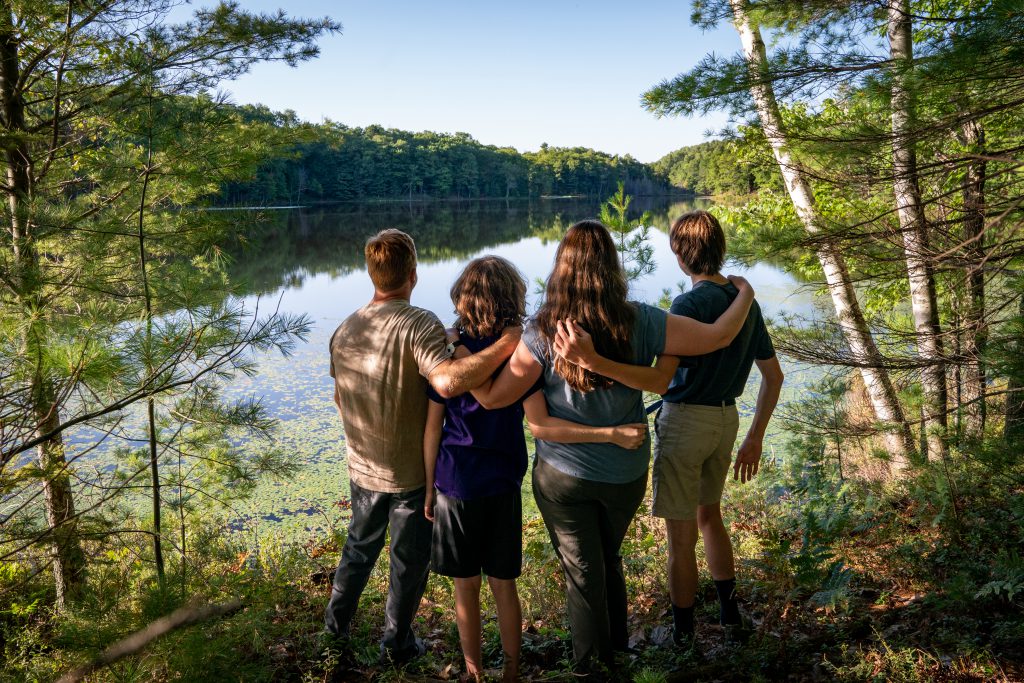
The Shoreline Living documents have become a mainstay of outreach to shoreline property owners, with about 125,000 printed and distributed to date. “We try to make sure new property owners get a copy, and the board members from our non-profit organization also went door-to-door and distributed the magazines to every riparian,” said Lisa Adams, President of Bass Lakes Area Environmental Partnership. “Not only was this a great way to get out the message of ‘shoreline living’, it was an amazing opportunity to meet and get to talk with a lot of our neighbors on the lakes about the importance of natural shorelines. The most frequent comment we got was how beautiful the pictures were and how surprised people were that a natural shoreline can also be a beautiful shoreline! There were several others who have incorporated native plants into their landscaping, reduced or eliminated fertilizers, and have reduced mowing right down to the waters edge.”
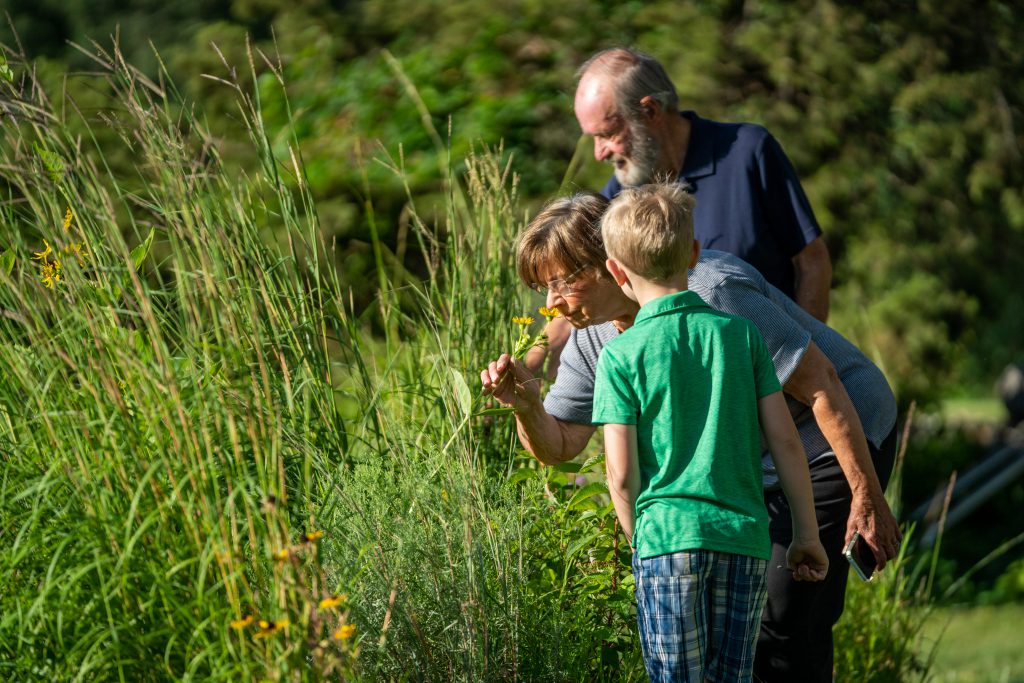
Do you have a use for the pictures? You can find all of the pictures in Shoreline Living and more on the Midwest Glacial Lakes Partnership’s Shoreline Living webpage. The pictures are available for the public to download and use at no cost if they are used for noncommercial, personal, or educational use and credit is given to Mark Bugnaski Photography.
All photographs above are courtesy of Mark Bugnaski Photography

